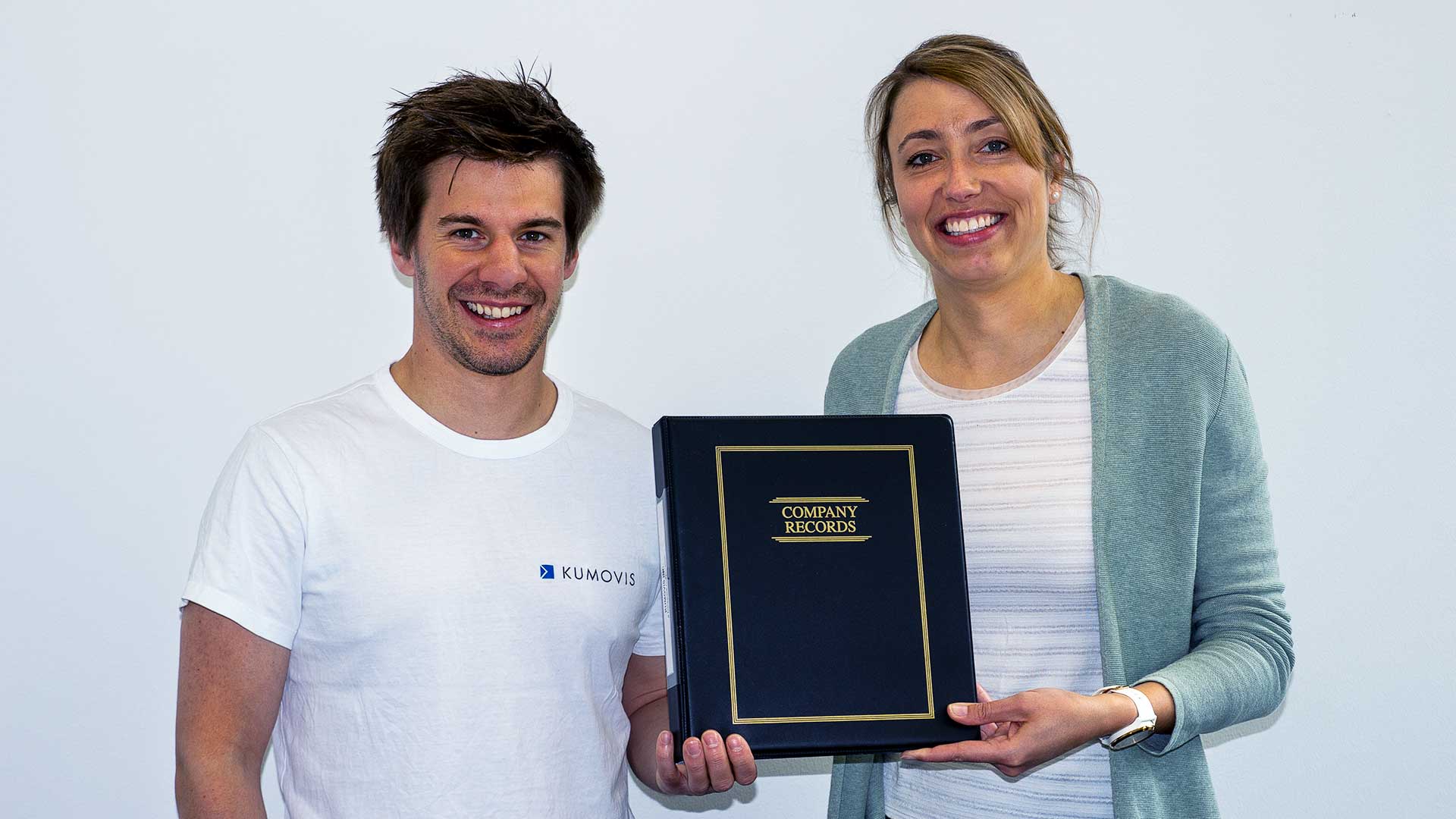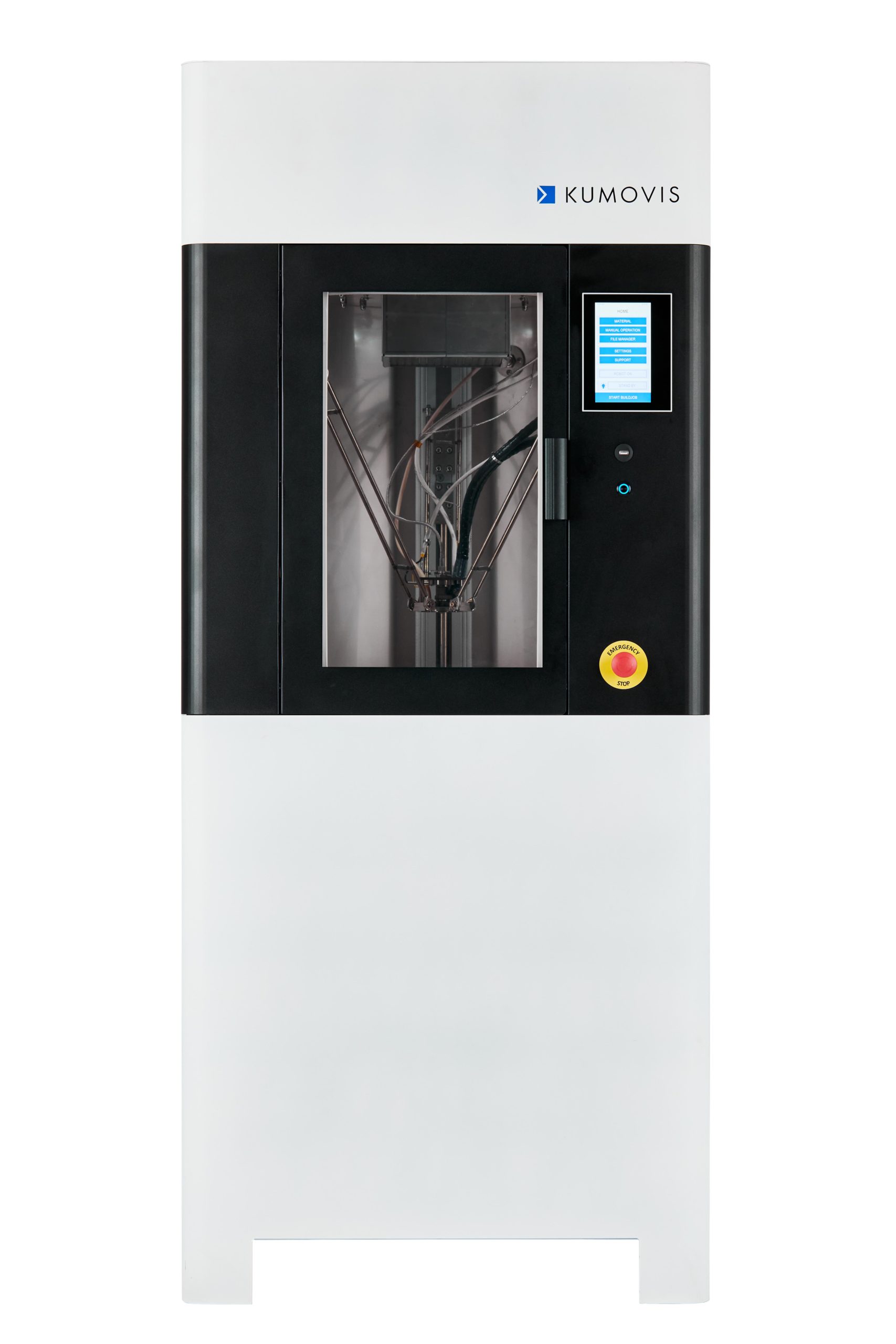German MedTech startup Kumovis is expanding its footprint in the United States. The developers of the world’s first 3D printer with cleanroom integration for medical device production recently announced the opening of its first subsidiary in the U.S. Although the location is still unknown, Kumovis will be venturing beyond the European MedTech arena for the first time, taking its trademark R1 printer and planning to further develop its 3D printing solutions for healthcare.
The move comes as the company grows, finding a niche in the MedTech field, and partners with industry leaders to push innovation and find solutions for patients. A spinout from the Technical University of Munich, the business has focused on 3D printing medical devices with high-performance and biodegradable polymers since 2017.

Kumovis to launch a subsidiary in the U.S. for 3D printing solutions in healthcare. Image courtesy of Kumovis.
In the last two years, Kumovis has commercialized its R1 3D printer system for decentralized cleanroom production and introduced new high-performance polymers, expanding its range of materials that fit in with medical requirements, such as PEEK PEKK, PPSU, and PLA. Among other applications, Kumovis technologies allow medical device manufacturers to economically 3D print individualized implants and small batches of surgical instruments on an industrial level.
Kumovis Co-CEO and Co-Founder Miriam Haerst told 3DPrint.com that the ultimate goal of the business is to use the end-to-end process developed for 3D printing medical devices to offer relief to the healthcare system and ultimately to patients. This idea has been proven once and again during the COVID-19 pandemic in 2020, as hospitals and research institutes learned how important reliable supply chains are and where shortages arise. In fact, the current developments have been a significant driving force behind Kumovis’ decision to open a subsidiary in the U.S., which now forms the cornerstone for business relationships with partner companies in North America. According to Kumovis, initial negotiations and 3D printer installations are already in progress.
Thanks to its innovative 3D printing solutions for healthcare, Kumovis can now tap into the largest medical technology market in the world. The U.S. ranks first, taking over roughly 40% of an over $400 billion global market, followed by Europe with 27%. One of the driving forces behind the market is the medical device industry, which is poised for steady growth, with global annual sales forecasted to rise by over 5% a year and reach nearly $800 billion by 2030, according to analysts at KPMG.
Haerst also explained that part of Kumovis’ solution strategy for key challenges in medical 3D printing is to address the market or needs that can benefit best from the combination of “industry-specific Kumovis hardware” and the “opportunities of medical-grade polymers.” This includes developing the associated medical devices collaboratively with partner companies such as KLS Martin, Samaplast, and Diener Implants, as well as clinics and hospitals.”
In the U.S., Kumovis is already discussing further steps with researchers, medical practitioners, and device manufacturers who are convinced of the great potential of 3D printing in medicine. For example, at Drexel University in Philadelphia, Pennsylvania, a predecessor machine to the R1 3D printer is used. Such projects serve as tie-ins and help Kumovis push 3D printing even further into American healthcare; that is, it “makes it work beyond anatomical models and surgical instruments,” said the startup.
Also, along with renowned surgeon Albert S. Woo, Professor at Brown University’s Warren Alpert Medical School and Chief Medical Officer and Co-Founder of Implant3D, Kumovis is looking at the individualization of cranial implants. On-site 3D printing in hospitals enables savings not only in materials but also in cost and time, says the company. Woo also sees an opportunity here: “3D printing patient-specific PEEK cranial implants at the point of care can improve outcomes in neurosurgery and craniomaxillofacial surgery. The introduction of solutions like this will expand the market and provide faster access to these critical technologies.”
Kumovis believes that innovators like Woo in the US are leading the way in their medical specialties, sharing enthusiasm surrounding the great potential of 3D printing in medicine and advocating 3D printing as a value-added manufacturing process. The additive manufacturing of cranial implants, spinal fusion devices, and instruments are only a few examples from a wide variety of possible medical applications for Kumovis in areas like cardiology, orthopedics, and general surgery.
“The future is promising for hospitals and medical device companies, particularly in the US,” explained Haerst. Nevertheless, she believes much of its innovative power will continue to come from its headquarters in Munich, Germany. “As promising as our first steps as a company on the American continent have proven to be, Kumovis is convinced that the overall technological progress in medical 3D printing with polymers also depends on the strong network we have built up in Europe over the years. And last but not least, the ever-growing Kumovis team in Munich makes a significant contribution to this on a daily basis.”
At the heart of the business is a mission to create decentralized manufacturing capacities that could generate a 3D printing revolution for hospitals, surgeons, and the healthcare industry in general. Thanks to the technology, medical technology production can find an optimal location along the value chain, particularly at the point of care, where patients and healthcare professionals need it the most. Both in the U.S. and Europe, this relatively new technology has a lot of room to grow, finding a way to deal with future demand for on-the-spot production of personalized health resources.
Subscribe to Our Email Newsletter
Stay up-to-date on all the latest news from the 3D printing industry and receive information and offers from third party vendors.
You May Also Like
Air Force Awards Fortius Metals $1.25M to Qualify 3D Printing Wire for Hypersonic Applications
AFWERX, part of the US Air Force Research Laboratory (AFRL), awarded a Direct-to-Phase II Small Business Innovation Research (SBIR) contract worth $1.25 million to Colorado’s Fortius Metals, to accelerate qualification...
US Air Force Awards JuggerBot $4M for Large-format Hybrid 3D Printing
Large-format 3D printer manufacturer JuggerBot has received a $4 million grant to develop a large format 3D printer, courtesy of the Under Secretary of Defense, Research and Engineering Manufacturing Technology...
Where Have All AM’s Unicorns Gone?
In the rapidly evolving world of 3D printing, startups valued at over a billion dollars, known as unicorns, once seemed as fantastical as the mythical creatures themselves. While a few...
How My Childhood Fascination with Planes Led to Investing in 3D Printing
My fascination with aerospace started young, and I started studying planes–identifying them in the sky and learning everything I could about how they work. Fast forward to my first week...

































